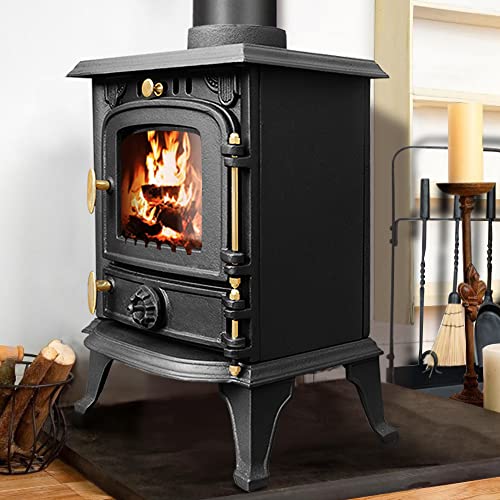7 Simple Secrets To Totally Enjoying Your Electric Heater
페이지 정보
작성자 Estella 작성일24-05-26 19:16 댓글0건관련링크
본문
How to Select Electric Heaters
fireplace electric logs heaters offer a range of advantages, including a lower initial cost, low maintenance for inset electric stoves homeowners, and a more efficient method to warm your home. They are also easier to use than heating systems that require venting.
They are especially beneficial if your electricity provider offers Economy 7 because the less expensive off-peak rate will help you save money on heating costs.
Temperature Settings
Ideal is that your electric heater lets you to set and maintain the temperature you want without having to turn it on or off. This will help save energy and stop you from leaving or entering the room that is too cold. You should look for a thermostat and if you can, one with timer functions.
When choosing an electric heater, be sure that it's rated for the space you have. A heater that's too small for your space will have to run longer than is necessary to reach the desired temperature, which is a waste of energy and causes the room to overheat. Utilize our calculator to determine the right size of heater for your space in terms of watts per sq. foot.
Also, make sure that the temperature control knobs are easy to access and adjust. If the knobs are recessed you may have to take out screws and remove insulation to reach the knobs, which can be difficult. Be sure to check the recommended temperature range for safety and efficiency. Temperatures that are lower than 120 degrees can cause bacteria to grow and increase the risk of burning. Temperatures above 140 degrees can pose dangerous for fire.
 The Everhot is an elegant compact heater specifically designed for conservatories, or as the company puts it: "annexes, holiday cottages narrow boats and shepherds' huts as well as Glamping pods." It can reach 200C and is an ideal choice for heating and cooking. It has a timer as well as an ECO mode that optimizes power and heat settings to be more energy-efficient.
The Everhot is an elegant compact heater specifically designed for conservatories, or as the company puts it: "annexes, holiday cottages narrow boats and shepherds' huts as well as Glamping pods." It can reach 200C and is an ideal choice for heating and cooking. It has a timer as well as an ECO mode that optimizes power and heat settings to be more energy-efficient.
It's also quiet and quiet, with no fan noise and no whirring noise when you change settings. This makes it an excellent choice for bedrooms or living rooms. It also has a few other useful features, such as a built-in nightlight which glows blue when the heater is on and a built-in humidifier that can be switched to an intermittent mist setting to create a subtle effect. It's also durable and secure and comes with a tip over shutoff switch, as well as an overheating safety feature that automatically shuts the unit off if it overheats. It's also registered with UL for safety.
Safety
When using electric heaters, it's important to take the appropriate safety precautions. Risks of fire from heaters as well as carbon monoxide (CO) poisoning can be especially dangerous to people with a disability, elderly or those suffering from chronic health issues or immune system disorders. Pets and children may also knock a heater over, causing injury or death.
ESFI recommends checking the plug and cord of your heater on a regular basis. Check for indications of damage, for example a cracked or loose plug or a damaged cord. If the outlet or cord is hot, stop using it and call a licensed electrician to repair it. Also, never connect multiple electrical devices to the same outlet with a space heater; it could cause overload and result in overheating.
It's a good idea also to use heaters that are listed or identified by a nationally-recognized testing laboratory, such as UL. These heaters are more likely to conform to voluntary safety standards. Avoid placing a heater near material that is flammable, such as carpets or textiles. Keep at least a three-foot safety clearance between the heater and any combustible materials. Also, don't put a heater in the bathroom or kitchen, and don't use it if you're in a wet state.
Additionally, be sure to connect an electric heater directly into a wall outlet not a power strip or extension cord. If you need to use an extension cord, make sure you choose the shortest possible heavy-duty one made with 14-gauge wire. Also, check for any loose outlets which could indicate an overloaded circuit.
If you're using an electric space heater in an open area make sure to keep it at least six inches from anything that could burn. Place the heater on an unburnable, flat surface, not on furniture, cabinets or tables that could overheat. Also, make sure to switch off and unplug the heater when you leave the room or go to sleep as it increases the risk of catching fire.
Electric heaters are a great method to cut down on energy consumption and reduce the risk of injuries. As temperatures drop, facility managers frequently turn to electric heaters to provide warmth in offices and common areas. Preferred Climate Solutions installs and provides maintenance for outdoor and indoor electric heating systems to make your facility as cozy during these cold winter months as possible. Contact us today to learn more about heating solutions.
Energy Efficiency
Consider the energy efficiency of the portable heater before making your choice. This refers to the amount of energy required to produce the desired output. Heaters that use less electricity are considered more efficient, and this could help reduce the overall cost of heating a home or business.
The heating element is utilized in most electrical heaters to convert electrical energy into warmth. It is made up of a ribbon, coil or flexible heater element or tubular element which emits heat when an electric current passes through it. The amount of heat that is produced is contingent on the heating element and the method through the means it transmits heat (convection or radiation).
If you're concerned about the impact on the environment, choose one that utilizes eco-friendly energy sources. This might be a renewable source of power or an alternative to fossil fuels like wind or solar.
Electric heaters' energy efficiency is also affected by where and how the electricity is generated. Electricity derived from wind or solar power plants is more efficient than electricity derived from fossil fuels used in power stations.
You should not only choose the heater that has an environmentally friendly energy source, but one that comes with a number of energy-saving features. These features could include automatic shutoff mechanisms that are activated in the event of a heater overheating, or if a unit is accidentally dropped.
These safety measures can help to safeguard your family or employees, and they can also contribute to lower energy bills by helping you avoid excess usage. Many portable electric heaters work quietly, making them perfect for offices, bedrooms and other places that require a calm environment.
Electric heaters can also save money by reducing your maintenance calls. Gas heaters are more costly to fix than electric heaters, and the cost of maintenance could increase over time. Electric models are generally less expensive to maintain and often come with more advanced features to help you save money.
Installation
Electric heaters work on the Joule principle that converts electrical energy into radiant warmth that warms the room. They're also efficient and cost-effective in comparison to other forms of heating, particularly gas. However, they aren't suitable for every home and could put stress on an existing electricity system. Therefore, it's best to have an electrician professional check if the current system is able to handle the additional demand of an Inset Electric Stoves wall heater before installing one.
When choosing an electric heater you must consider a variety of factors, including the type and size of the heater, as well as the space in the room it will be installed. The type of heater you choose will determine how much it will cost to run. An electric baseboard heater can cost more than an electric space heater or a portable heater however it provides more even warmth and won't require any vents or chimneys.
Electric fan heaters have an air blower that circulates hot air throughout the room. This kind of heater is usually cheapest to run, but it can be noisy and takes longer to heat a room than other types of electric heaters.
Look for an electric space heater that has an integrated thermostat. This feature lets you to set a temperature target and the heater will turn off automatically when it reaches the desired temperature. This feature can help reduce the energy use and also save you from having to constantly turn the heater on and off.
 Before attempting to install an electric heater, ensure that the power is off on the breaker panel and ensure that the circuit is off using a test device. Then, mark the spot where you'll be mounting the electric heater on the wall. Then, cut an opening in the drywall. Use a drywall cutter to cut off the needed section. Be careful not to scratch any electrical wires or pipes.
Before attempting to install an electric heater, ensure that the power is off on the breaker panel and ensure that the circuit is off using a test device. Then, mark the spot where you'll be mounting the electric heater on the wall. Then, cut an opening in the drywall. Use a drywall cutter to cut off the needed section. Be careful not to scratch any electrical wires or pipes.
Run a 14/2 cable of the same gauge as the existing wires from the panel for the breaker to the wall opening. Remove about 1 inch of insulation off the conductors' ends on each wire and connect them to an accessible screw in the outlet box. Label or mark this wire with red tape to identify it as the "line". Connect it to the wire leads in the thermostat box, marked "load".
fireplace electric logs heaters offer a range of advantages, including a lower initial cost, low maintenance for inset electric stoves homeowners, and a more efficient method to warm your home. They are also easier to use than heating systems that require venting.
They are especially beneficial if your electricity provider offers Economy 7 because the less expensive off-peak rate will help you save money on heating costs.
Temperature Settings
Ideal is that your electric heater lets you to set and maintain the temperature you want without having to turn it on or off. This will help save energy and stop you from leaving or entering the room that is too cold. You should look for a thermostat and if you can, one with timer functions.
When choosing an electric heater, be sure that it's rated for the space you have. A heater that's too small for your space will have to run longer than is necessary to reach the desired temperature, which is a waste of energy and causes the room to overheat. Utilize our calculator to determine the right size of heater for your space in terms of watts per sq. foot.
Also, make sure that the temperature control knobs are easy to access and adjust. If the knobs are recessed you may have to take out screws and remove insulation to reach the knobs, which can be difficult. Be sure to check the recommended temperature range for safety and efficiency. Temperatures that are lower than 120 degrees can cause bacteria to grow and increase the risk of burning. Temperatures above 140 degrees can pose dangerous for fire.
 The Everhot is an elegant compact heater specifically designed for conservatories, or as the company puts it: "annexes, holiday cottages narrow boats and shepherds' huts as well as Glamping pods." It can reach 200C and is an ideal choice for heating and cooking. It has a timer as well as an ECO mode that optimizes power and heat settings to be more energy-efficient.
The Everhot is an elegant compact heater specifically designed for conservatories, or as the company puts it: "annexes, holiday cottages narrow boats and shepherds' huts as well as Glamping pods." It can reach 200C and is an ideal choice for heating and cooking. It has a timer as well as an ECO mode that optimizes power and heat settings to be more energy-efficient.It's also quiet and quiet, with no fan noise and no whirring noise when you change settings. This makes it an excellent choice for bedrooms or living rooms. It also has a few other useful features, such as a built-in nightlight which glows blue when the heater is on and a built-in humidifier that can be switched to an intermittent mist setting to create a subtle effect. It's also durable and secure and comes with a tip over shutoff switch, as well as an overheating safety feature that automatically shuts the unit off if it overheats. It's also registered with UL for safety.
Safety
When using electric heaters, it's important to take the appropriate safety precautions. Risks of fire from heaters as well as carbon monoxide (CO) poisoning can be especially dangerous to people with a disability, elderly or those suffering from chronic health issues or immune system disorders. Pets and children may also knock a heater over, causing injury or death.
ESFI recommends checking the plug and cord of your heater on a regular basis. Check for indications of damage, for example a cracked or loose plug or a damaged cord. If the outlet or cord is hot, stop using it and call a licensed electrician to repair it. Also, never connect multiple electrical devices to the same outlet with a space heater; it could cause overload and result in overheating.
It's a good idea also to use heaters that are listed or identified by a nationally-recognized testing laboratory, such as UL. These heaters are more likely to conform to voluntary safety standards. Avoid placing a heater near material that is flammable, such as carpets or textiles. Keep at least a three-foot safety clearance between the heater and any combustible materials. Also, don't put a heater in the bathroom or kitchen, and don't use it if you're in a wet state.
Additionally, be sure to connect an electric heater directly into a wall outlet not a power strip or extension cord. If you need to use an extension cord, make sure you choose the shortest possible heavy-duty one made with 14-gauge wire. Also, check for any loose outlets which could indicate an overloaded circuit.
If you're using an electric space heater in an open area make sure to keep it at least six inches from anything that could burn. Place the heater on an unburnable, flat surface, not on furniture, cabinets or tables that could overheat. Also, make sure to switch off and unplug the heater when you leave the room or go to sleep as it increases the risk of catching fire.
Electric heaters are a great method to cut down on energy consumption and reduce the risk of injuries. As temperatures drop, facility managers frequently turn to electric heaters to provide warmth in offices and common areas. Preferred Climate Solutions installs and provides maintenance for outdoor and indoor electric heating systems to make your facility as cozy during these cold winter months as possible. Contact us today to learn more about heating solutions.
Energy Efficiency
Consider the energy efficiency of the portable heater before making your choice. This refers to the amount of energy required to produce the desired output. Heaters that use less electricity are considered more efficient, and this could help reduce the overall cost of heating a home or business.
The heating element is utilized in most electrical heaters to convert electrical energy into warmth. It is made up of a ribbon, coil or flexible heater element or tubular element which emits heat when an electric current passes through it. The amount of heat that is produced is contingent on the heating element and the method through the means it transmits heat (convection or radiation).
If you're concerned about the impact on the environment, choose one that utilizes eco-friendly energy sources. This might be a renewable source of power or an alternative to fossil fuels like wind or solar.
Electric heaters' energy efficiency is also affected by where and how the electricity is generated. Electricity derived from wind or solar power plants is more efficient than electricity derived from fossil fuels used in power stations.
You should not only choose the heater that has an environmentally friendly energy source, but one that comes with a number of energy-saving features. These features could include automatic shutoff mechanisms that are activated in the event of a heater overheating, or if a unit is accidentally dropped.
These safety measures can help to safeguard your family or employees, and they can also contribute to lower energy bills by helping you avoid excess usage. Many portable electric heaters work quietly, making them perfect for offices, bedrooms and other places that require a calm environment.
Electric heaters can also save money by reducing your maintenance calls. Gas heaters are more costly to fix than electric heaters, and the cost of maintenance could increase over time. Electric models are generally less expensive to maintain and often come with more advanced features to help you save money.
Installation
Electric heaters work on the Joule principle that converts electrical energy into radiant warmth that warms the room. They're also efficient and cost-effective in comparison to other forms of heating, particularly gas. However, they aren't suitable for every home and could put stress on an existing electricity system. Therefore, it's best to have an electrician professional check if the current system is able to handle the additional demand of an Inset Electric Stoves wall heater before installing one.
When choosing an electric heater you must consider a variety of factors, including the type and size of the heater, as well as the space in the room it will be installed. The type of heater you choose will determine how much it will cost to run. An electric baseboard heater can cost more than an electric space heater or a portable heater however it provides more even warmth and won't require any vents or chimneys.
Electric fan heaters have an air blower that circulates hot air throughout the room. This kind of heater is usually cheapest to run, but it can be noisy and takes longer to heat a room than other types of electric heaters.
Look for an electric space heater that has an integrated thermostat. This feature lets you to set a temperature target and the heater will turn off automatically when it reaches the desired temperature. This feature can help reduce the energy use and also save you from having to constantly turn the heater on and off.
 Before attempting to install an electric heater, ensure that the power is off on the breaker panel and ensure that the circuit is off using a test device. Then, mark the spot where you'll be mounting the electric heater on the wall. Then, cut an opening in the drywall. Use a drywall cutter to cut off the needed section. Be careful not to scratch any electrical wires or pipes.
Before attempting to install an electric heater, ensure that the power is off on the breaker panel and ensure that the circuit is off using a test device. Then, mark the spot where you'll be mounting the electric heater on the wall. Then, cut an opening in the drywall. Use a drywall cutter to cut off the needed section. Be careful not to scratch any electrical wires or pipes.Run a 14/2 cable of the same gauge as the existing wires from the panel for the breaker to the wall opening. Remove about 1 inch of insulation off the conductors' ends on each wire and connect them to an accessible screw in the outlet box. Label or mark this wire with red tape to identify it as the "line". Connect it to the wire leads in the thermostat box, marked "load".
댓글목록
등록된 댓글이 없습니다.








